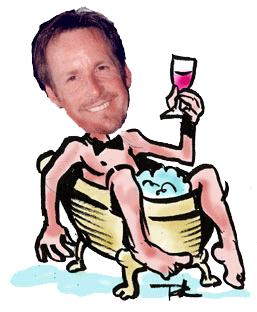Children frolic in the surf and sand. Parents and grandparents stretch out on lounge chairs around the pool, basking in the gentle Maui sun. I don’t think I’ve ever seen so many multi-generational families in one place. I explore Sheraton Resort’s pool that leads to a long circular canal, complete with cascading waterfalls, bridges and tropical vegetation that gracefully caresses the top of the pool’s lava-enhanced walls.
They match the color of the resort’s Black Rock (Pu’u Keka’a), the iconic symbol of Ka’anapali Beach. I swim over to Sheraton’s Cliff Dive Bar, grab a chair and marvel at the ethereal red sun as it disappears into the ocean. This is the ideal spot to witness a traditional cliff diving ceremony, which pays homage to the legendary dives of Maui’s Chief Kahekili from atop of the Black Rock. Said to be seven foot tall and 300 pounds, Chief Kahekili demanded fearlessness from his warriors, and demonstrated his own bravery to them by taking dives up to 400 feet into the sea.
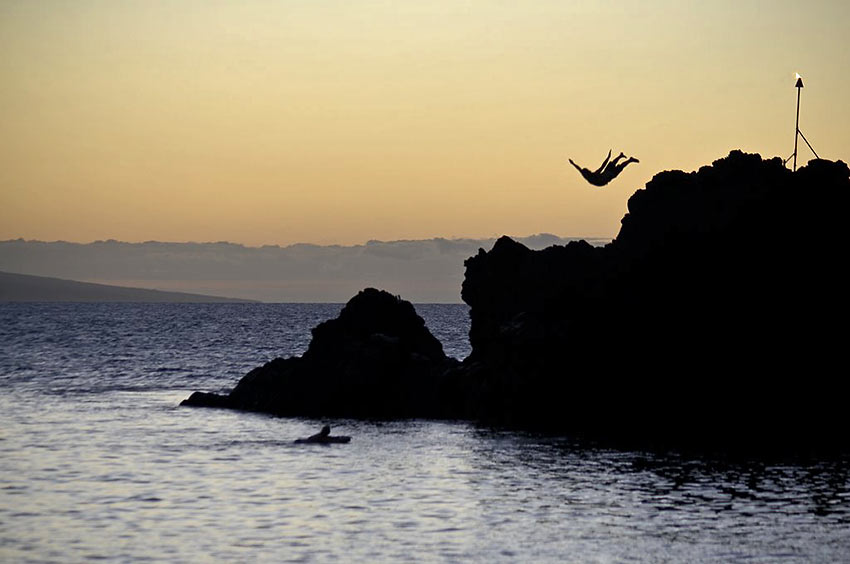
The iconic Black Rock, where Chief Kahekili would demonstrate his bravery by diving 400 feet into the sea. Courtesy photoToday’s diver stands at the top of the cliff, recites a Hawaiian chant, offers a torch and lei to the ocean, then leaps into the sea without making a splash. I was impressed how the resort embraced traditional Hawaiian history and culture. And there was so much more of it to explore.
Back Story
Steeped in culture and history, Ka’anapali’s pristine sands and lush gardens were a popular retreat for Hawaiian kings and queens. Green sugar cane and taro covered the land, and warriors used the landscape as a training ground. Nestled on Maui’s southwest coast, Ka’anapali Beach Resort was established in 1963 as Hawaii’s first master-planned destination resort. Its three-mile stretch of white sand beach was once voted the ‘Best Beach in America’ by TripAdvisor.
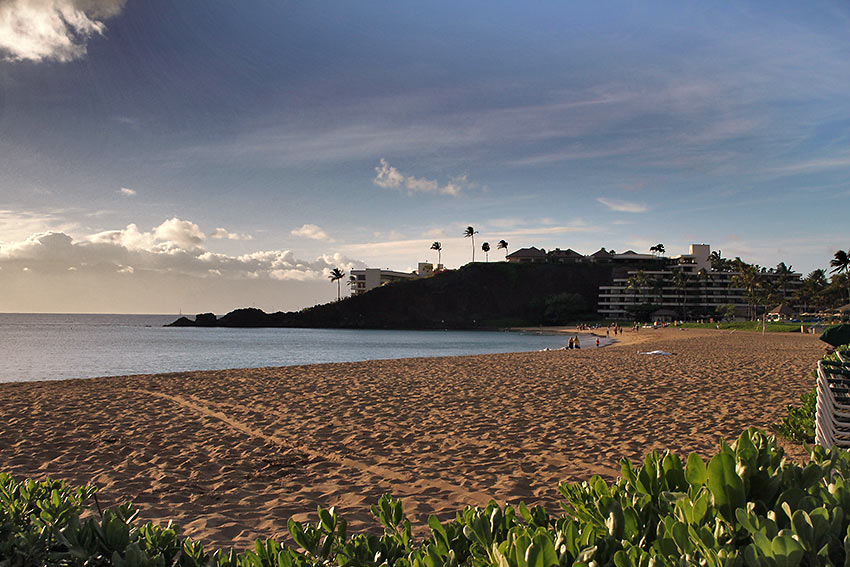
The Ka’anapali Resort is dotted by five oceanfront luxury hotels resting on expansive tropical lawns, and six condos and vacation club resorts. There’s a wide array of high-end restaurants and oceanfront bars. My pick is the Hula Grill where chef Peter Merriman is influenced by the “slow food movement,” using seasonal ingredients from local farms, ranches and the sea. Around the corner, Whalers Village is a tasteful open air mall featuring many Hawaiian made products. The centerpiece of the village is Whalers Museum that showcases Maui’s whaling history with artifacts, exhibitions, video productions, and lectures. I learned that the Marquesas first arrived in Kauai, and then the Tahitians who defeated the Marquesas, claiming Maui, Kauai and all the other Hawaiian islands for themselves. In 1846 there were 429 arrivals by whaling ships on the Ka’anapali Coast, which changed the texture of Hawaiian life forever.
Activities
Readers note: at check-in I was confronted with a myriad of extra fees, which included a ‘resort fee’ for lounge chairs, towel service, roving waiters, and use of the swimming pool. Seriously, when one books a beachfront hotel you would naturally expect these services to be included in the initial fee.
Anyway, for additional water sports, the choices are endless: snorkeling, scuba diving, scuba diving – a hybrid of snorkeling and scuba diving – kayaking, windsurfing, catamaran cruises, and parasailing. Just pop over to a beach activities kiosk and name your poison. For landlubbers there’s championship golf, zip-lining, lu’aus, hula and “lauhala” (the leaves of the hala tree) weaving, quilting and lei-making classes. For exploring Ka’anapali’s colorful past, don’t miss the free Kaanapali Historical Trail & History and Legends Tour.
The Wa’a Kiakahi Hawaiian Canoe Sailing Festival
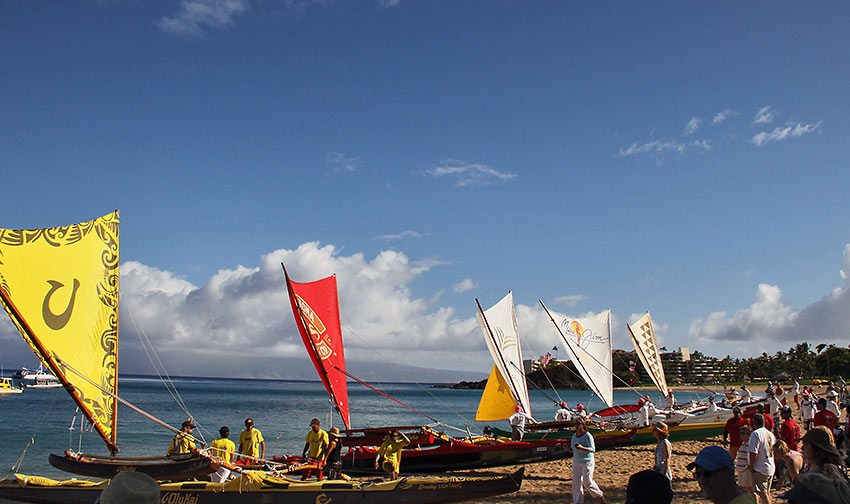
I watched in wonder as ten canoes, each with a colorful mast, rounded the Black Rock. Minutes later the canoes were pulled up onto the beach by their crews, and I found myself part of a welcoming ceremony for the festival.
Soon the crews and spectators formed a circle, held hands, and a Hawaiian Cultural Practitioner gave a traditional blessing. Every year, the Hawaiian Canoe Association (HSCA) holds a race between the islands of Hawaii. During their stop on Ka’anapali Beach, they offer canoe rides to the public and educate them about the “wa’a” tradition (wa’a kaikahi means a canoe with a single mast).
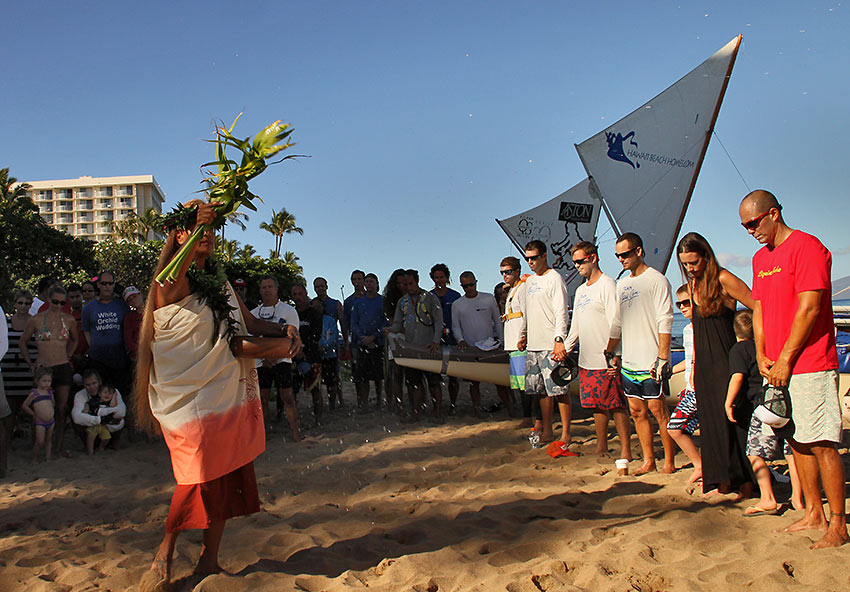
The mission of the HSCA is to revive and practice ancient Hawaiian skills and values as they relate to sailing canoes and Hawaiian culture. The next day I paddled out with a crew to experience it myself. While attempting to hide my rudimentary paddling, I quickly learn that sailing a canoe requires an unfathomable amount of strength and skill, and it captured my imagination about ancient Polynesian sailing. Later a crew member would “talk story” on why the canoe and the water are so important to the Hawaiian way of life. Although today most “wa’a” are made of composite graphite or fiber-glass, they are still considered to be living entities by the Hawaiian people. They are the boats that allowed the Polynesians to sail the water, crossing the ocean from the Pacifica. Early the next morning I was back in the circle where the same practitioner offered a farewell blessing.
And then they were gone, racing to Moloka’i. But the experience remains, coloring my thoughts of this ancient and proud culture. I was delighted that the resort embraced traditional Hawaiian traditions, which the Euro-American, missionaries, whalers and planters tried to destroy. I should add, though, that the Polynesian Cultural Center on Oahu has also done a great job, keeping alive the rich history and traditions of the indigenous island cultures of Polynesia (many islands). There is much to enjoy at Ka’anapali Beach; it is a piece of paradise loved by locals and tourists alike. The canoe sailing festival touched my soul and clearly topped my stay at the Ka’anapali Beach Resort.
For further information, click on Ka’anapali Beach Resort
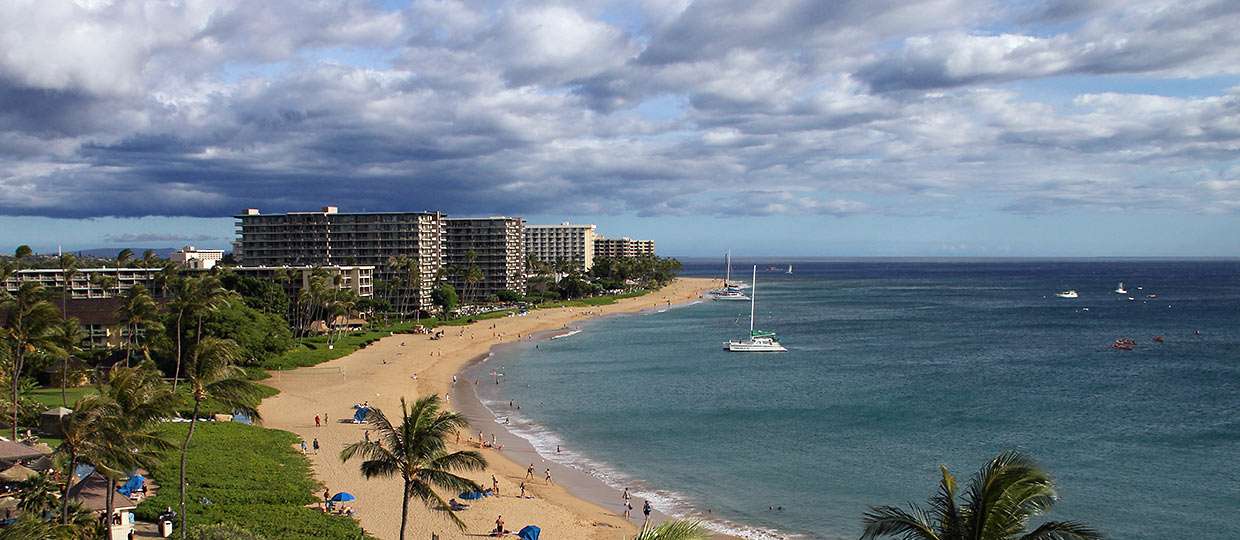
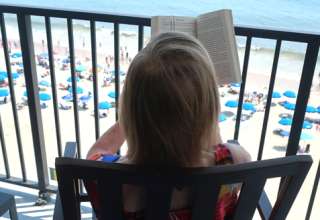
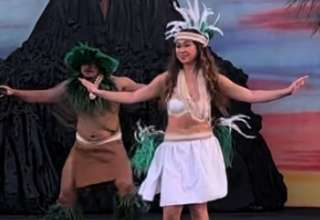

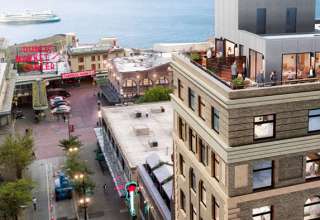

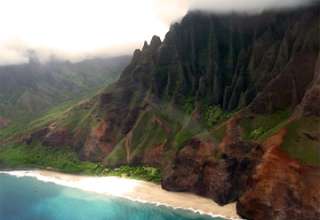
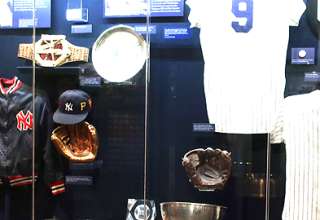
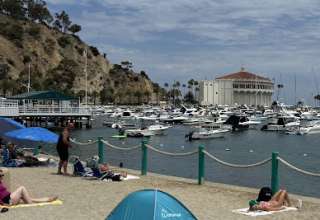
 Ringo Boitano is the younger (by 2 minutes) twin brother of Traveling Boy founder, Ed Boitano. As a former venture capitalist, Ringo’s remarkable essays on luxury travel capture the hopes and dreams of today’s hedonistic traveler as they venture into the secular world of travel.
Ringo Boitano is the younger (by 2 minutes) twin brother of Traveling Boy founder, Ed Boitano. As a former venture capitalist, Ringo’s remarkable essays on luxury travel capture the hopes and dreams of today’s hedonistic traveler as they venture into the secular world of travel.